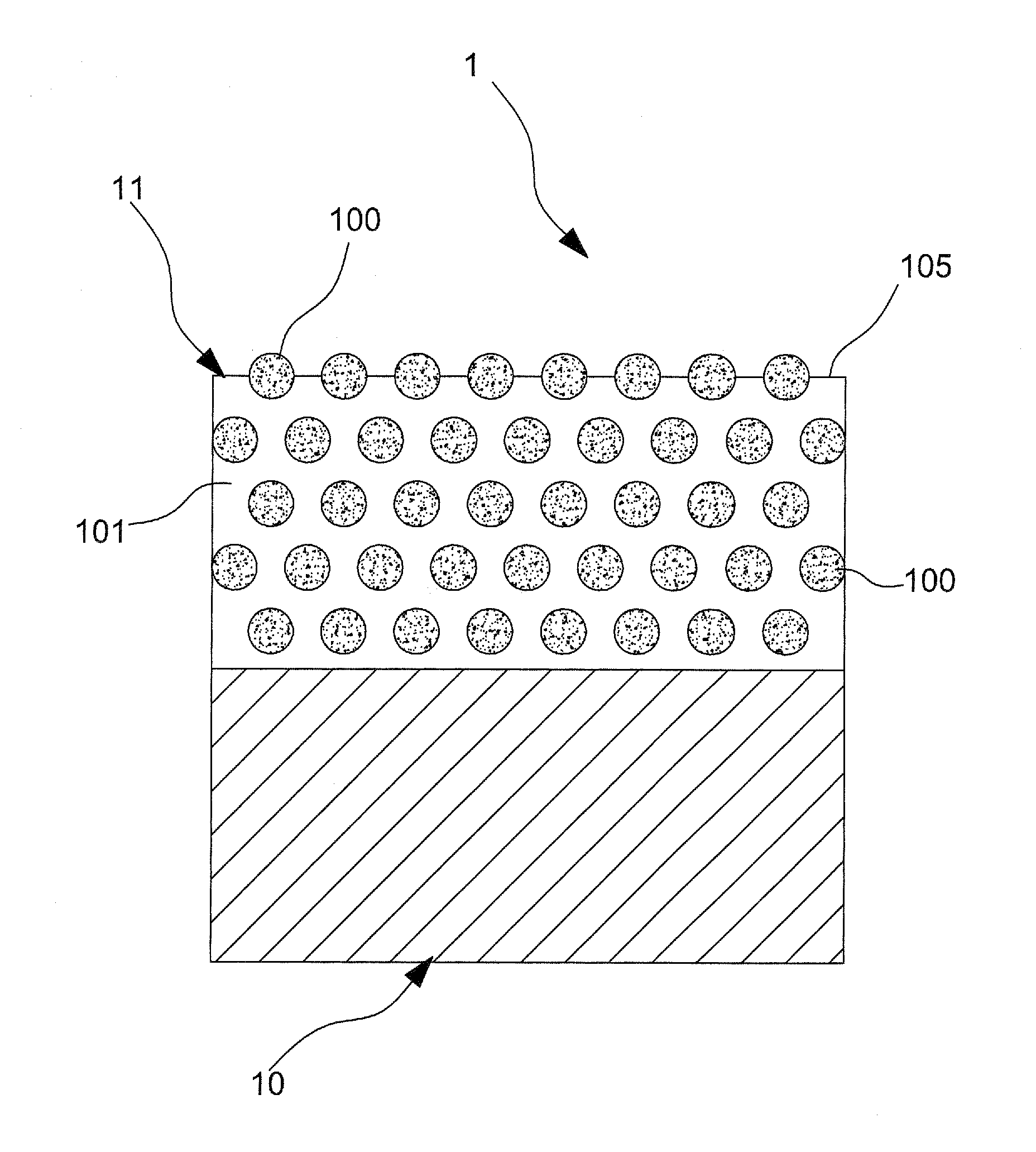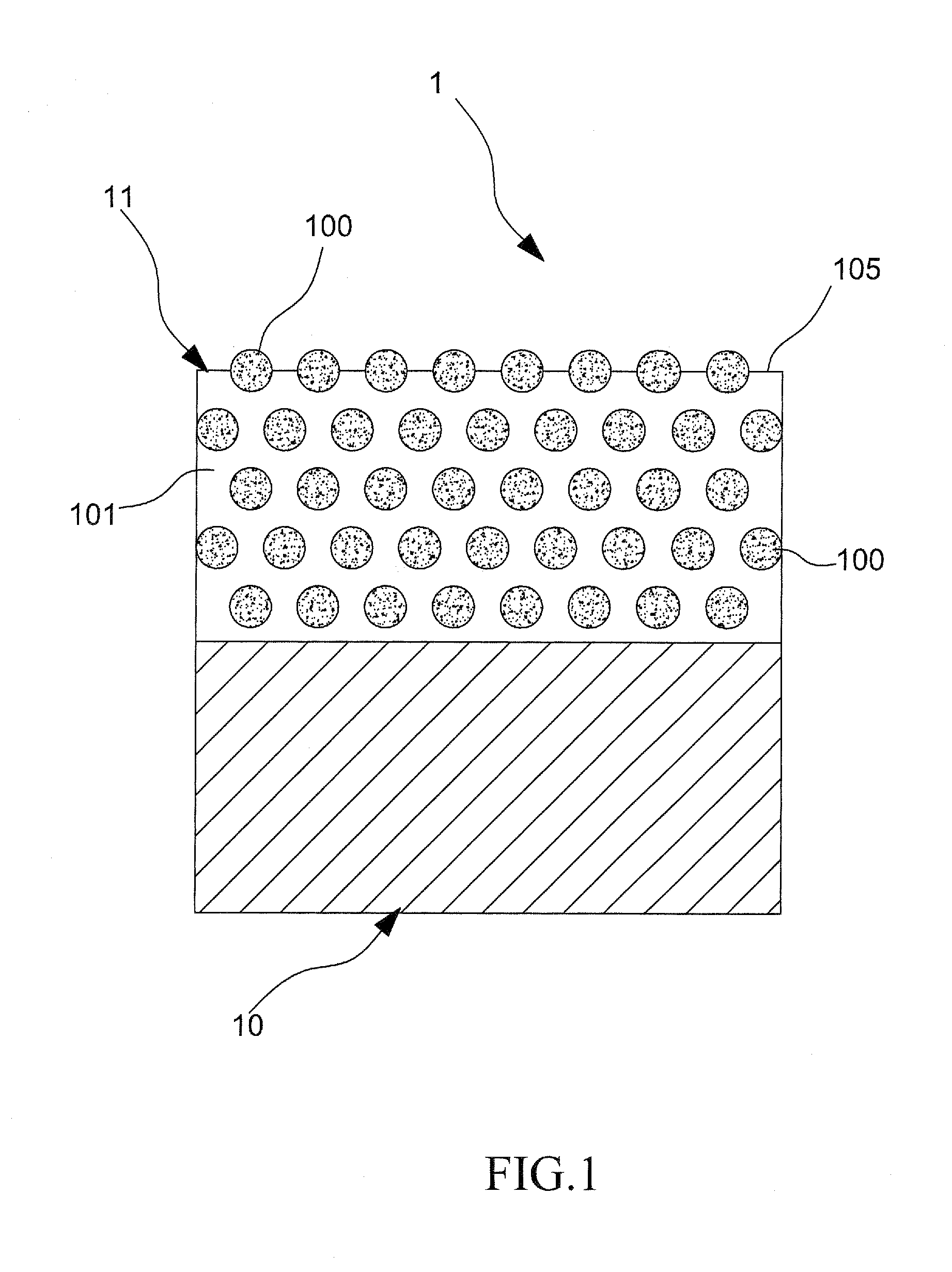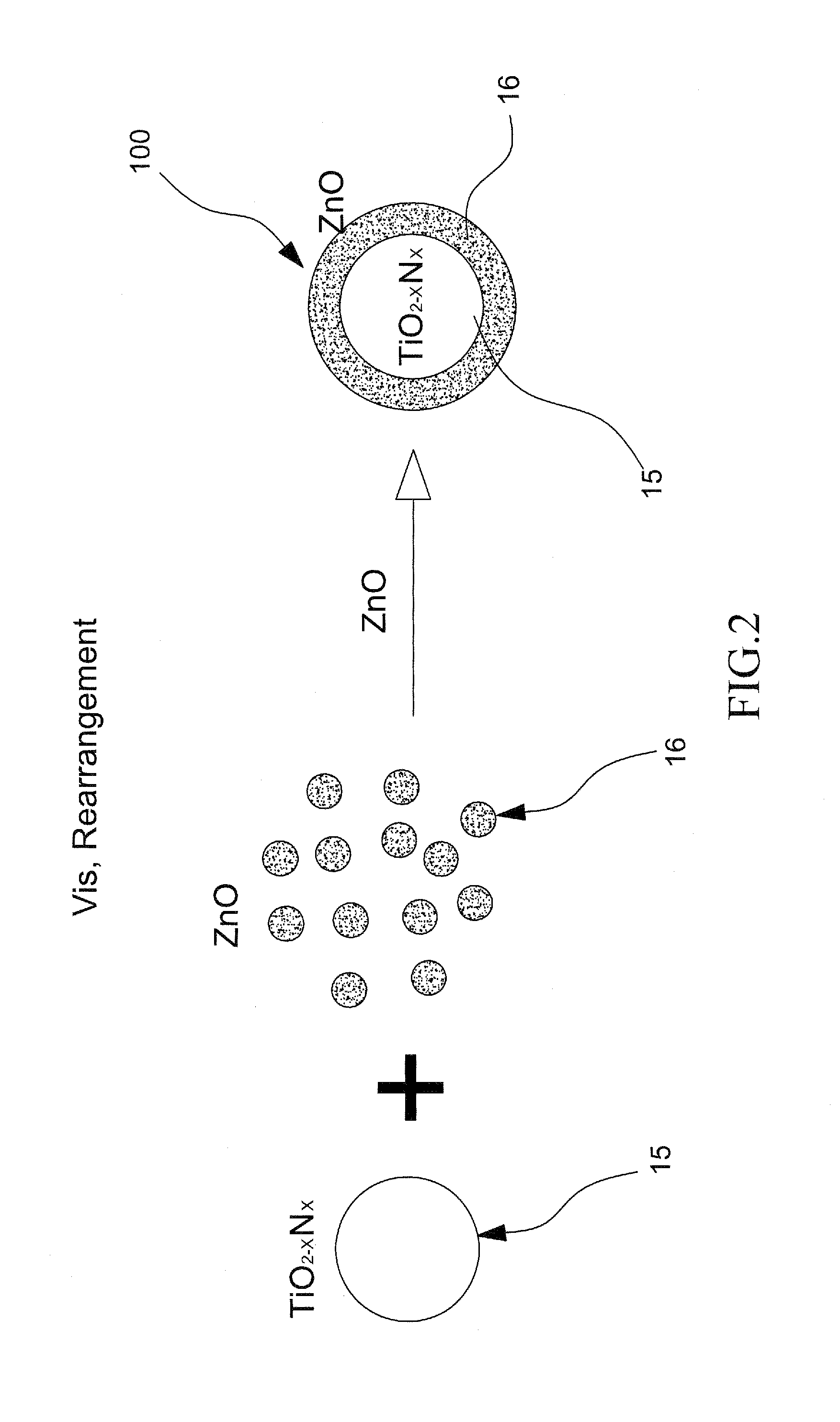Photon-alignment optical film
a technology of aligned optical film and film structure, applied in the direction of roads, instruments, traffic signals, etc., can solve the problems of difficult to employ the technology of cholesteric liquid crystal, high manufacturing cost, and easy formation of moiré patterns in the structure of prism-like lenses, etc., to improve the illumination of light, improve the effect of electrical conduction, and high transmittan
- Summary
- Abstract
- Description
- Claims
- Application Information
AI Technical Summary
Benefits of technology
Problems solved by technology
Method used
Image
Examples
first modified embodiment
[0073]Referring to FIG. 6, in a first modified embodiment according to the present invention, a photon-alignment optical film, generally designated at 1a, comprises two layers 11, 11a of core / shell nanoparticles and the two core / shell nanoparticle layers11, 11a are applied to sequentially coat on the same surface of a film substrate 10 with a lower layer 11 of the core / shell nanoparticles containing core / shell nanoparticles 100 (referred hereinafter to as “minor particles”) having a size greater than the optical thickness of full wavelength of visible light. The minor core / shell nanoparticles 100 provide functions of light diffusion or brightness enhancement. For anti-reflection or anti-static purposes, the upper layer, namely the outer layer 11a, of the core / shell nanoparticles contains core / shell nanoparticles 100a (referred hereinafter to as “major particles”) having a size less than the optical thickness of full wavelength of visible light.
third modified embodiment
[0074]Referring to FIGS. 8 and 9, second and third modified embodiments of the photon-alignment optic film according to the present invention are shown, both comprising a structure having two layers of core / shell nanoparticles that are arranged opposite to each other, wherein the photon-alignment optical films according to the present invention comprises two layers 11 of core / shell nanoparticle and the two core / shell nanoparticle layers 11 are respectively coated on opposite surfaces of a film substrate 10. One of the core / shell nanoparticle layers contains minor core / shell nanoparticles 100a, while the other layer contains major core / shell nanoparticles 100. In the third modified embodiment, a fraction of the minor core / shell nanoparticles 100a are made protruding beyond an outer surface of the core / shell nanoparticle layer thereof.
second modified embodiment
[0075]Referring to FIGS. 10 and 11, fourth and fifth modified embodiments of the photon-alignment optic film according to the present invention are shown, which, similar to the second modified embodiment discussed previously, comprise a structure having two oppositely arranged layers of core / shell nanoparticles. However, in these two embodiments, the two core / shell nanoparticle layers on the two surfaces both contain minor core / shell nanoparticles 100a, and a fraction of the minor core / shell nanoparticles 100a is allowed to selectively protrude beyond a surface of the associated core / shell nanoparticle layer.
[0076]Referring to FIGS. 12 and 13, sixth and seventh modified embodiments of photon-alignment optical film according to the present invention are shown, wherein a layer of core / shell nanoparticle (comprising minor core / shell nanoparticles 100a) is arranged on a surface of a film substrate 10 and two stacked layers of core / shell nanoparticle (respectively comprising major core / s...
PUM
| Property | Measurement | Unit |
|---|---|---|
| optical thickness | aaaaa | aaaaa |
| refractive index | aaaaa | aaaaa |
| thickness | aaaaa | aaaaa |
Abstract
Description
Claims
Application Information
 Login to View More
Login to View More - R&D
- Intellectual Property
- Life Sciences
- Materials
- Tech Scout
- Unparalleled Data Quality
- Higher Quality Content
- 60% Fewer Hallucinations
Browse by: Latest US Patents, China's latest patents, Technical Efficacy Thesaurus, Application Domain, Technology Topic, Popular Technical Reports.
© 2025 PatSnap. All rights reserved.Legal|Privacy policy|Modern Slavery Act Transparency Statement|Sitemap|About US| Contact US: help@patsnap.com



